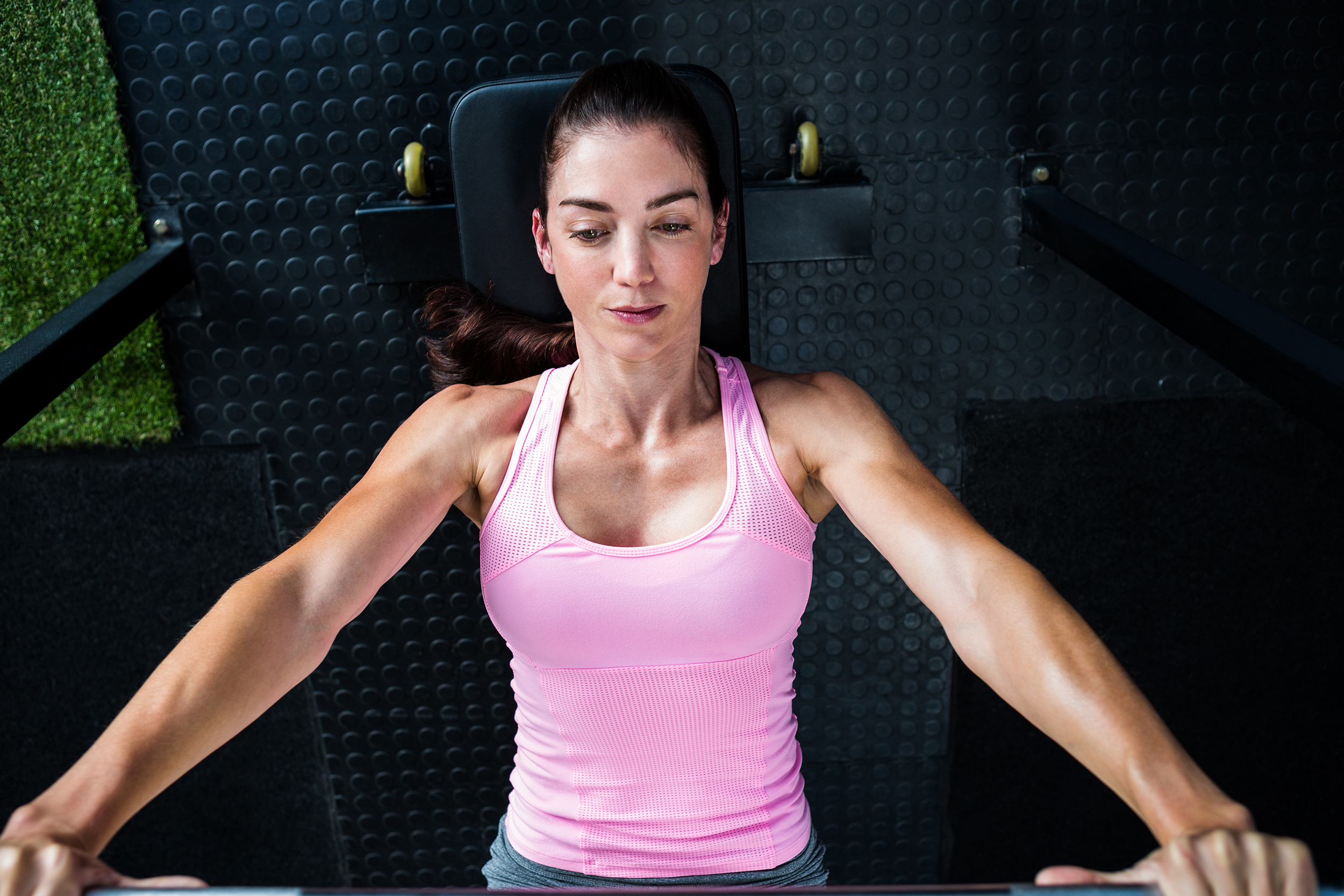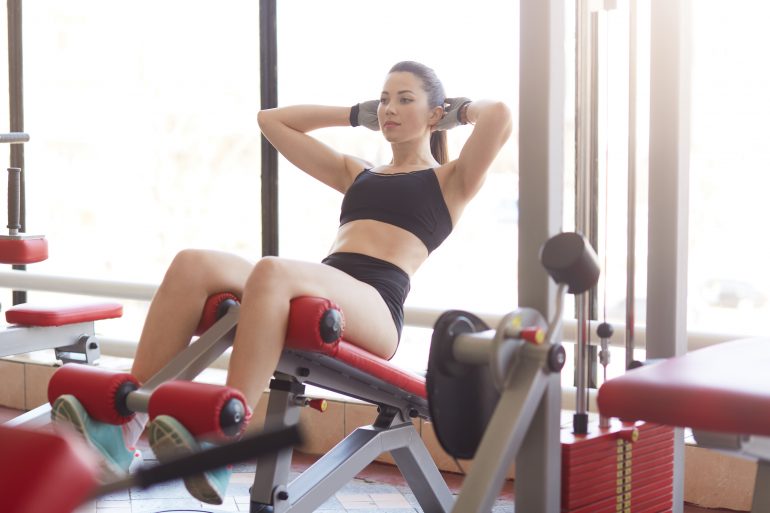Bench press is one of the best exercises when it comes to toning your upper body. You can do this exercise in three main variations- Flat, incline and decline. The decline bench press primarily targets the lower part of the pectoralis major muscles. To a lesser extent, it also works the upper pectoralis major, anterior deltoids and triceps. The biceps muscles on the front of your upper arms work as stabilizers during the movement. It is is an effective flat bench alternative that will change the angle and tension placed on the chest; increasing the likelihood of new stimulus to the working muscle and therefore an increased probability of muscle growth in size and strength. It is slightly different from the movement in incline bench press. Both offer similar overall engagement of the clavicular head of the chest, but the flat and decline positions recruit the sternocostal head muscles a bit more than the incline press.
The lower section of the pectorals major is often neglected as there are only a handful of exercises for it in comparison to the rest of the chest, so taking full advantage of this exercise is going to greatly help the development of this section. Due to the lowered positioning of the decline bench press; the ability to lift and arch your back is eradicated and therefore there is less potential stress placed on the back and an all round safer lifting experience for anyone performing the exercise. Though the lowered position of the decline press aims to boost your range of motion, you can seriously stunt that range if your grip is too wide. As a rule of thumb, your forearms should be pretty much vertical at the bottom of a rep, with an overhand grip for a standard decline press.
Because of the unusual positing of this bench press variation, it is key that form and technique is sound throughout the movement. Here are detailed steps for a decline bench press-

Before starting this exercise, set the bench to 15 to 30 degrees on a decline, then:
- Secure your feet at the end of the bench. Lie down with your eyes under the barbell.
- Grip the bar with your palms facing forward, arms slightly wider than shoulder-width apart.
- Straighten your arms to lift the dumbbell/barbell from the rack. Move it over your shoulders, locking your elbows.
- Inhale and slowly lower the dumbbell/barbell until it touches your mid- chest, keeping your elbows 45 degrees from your body. Pause.
- Exhale and lift the dumbbell/barbell to starting position, locking your elbows. Pause.
- Complete 12 repetitions. Return the dumbbell/barbell to the rack.
- Repeat 3 to 5 sets total.
To maximize physical performance, include incline, flat and decline bench presses in your training routine. As an added bonus, varying this exercise can reduce overall stress through your shoulders, elbows and wrists as each one targets chest and arm muscles a little differently. If you want to do this exercise at home, you can do it on a yoga mat with a glute bridge. Stay Home, Stay Safe and Take care!
 Deanne Panday is a fitness expert, health coach, author, and blogger @balancebydeanne. A fitness enthusiast to the core, she has trained ‘Miss India’s for years and also helped Bollywood’s star heroines stay in shape. www.deannepanday.com @deannepanday
Deanne Panday is a fitness expert, health coach, author, and blogger @balancebydeanne. A fitness enthusiast to the core, she has trained ‘Miss India’s for years and also helped Bollywood’s star heroines stay in shape. www.deannepanday.com @deannepanday







